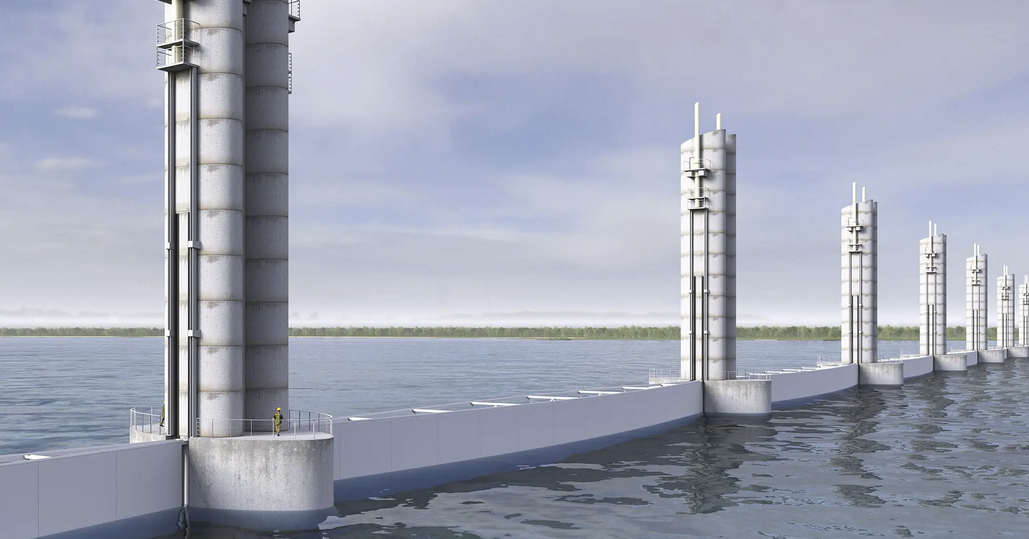Texas lawmakers are currently deliberating the allocation of approximately $1 billion in funds for flood prevention measures, with a significant portion intended for Galveston’s “Ike Dike” coastal barrier project. However, this investment represents only a fraction of the estimated tens of billions of dollars needed to safeguard Texas communities against hurricanes and floods, as outlined in early proposals for the state’s inaugural flood plan.
Negotiations between the Texas House and Senate regarding the state’s two-year budget have included $550 million for proposed coastal barrier projects, including the “Ike Dike.” This gate system, named after the 2008 Hurricane Ike that caused significant damage to Galveston Island, aims to protect the area by creating a large barrier at the mouth of Galveston Bay.
Both chambers have also proposed allocating hundreds of millions of dollars to Texas’ Flood Infrastructure Fund, a financial resource for flood prevention projects. The final amount has yet to be determined, as the House has suggested $625 million, while the Senate has proposed $400 million.
With less than two weeks remaining in the legislative session, Senator Charles Perry, a Republican from Lubbock, who has long championed water-fund legislation, expressed confidence that a significant portion of the budget would be allocated to the Flood Infrastructure Fund.
When combined with the funding for the coastal barrier and the Ike Dike project, Texas could witness an investment of approximately $1 billion this year toward flood prevention infrastructure as part of the state’s overall $300 billion two-year budget.
Studies have shown that climate change has contributed to rising temperatures and warmer oceans, leading to increased moisture in the air and a higher risk of extreme rainfall events in Texas. Specifically, heavy precipitation during hurricanes has been linked to climate change, with Hurricane Harvey experiencing an estimated 19% increase in total rainfall due to these factors.
Separately, state lawmakers are considering allocating between $1 billion and $3 billion for new water supply and water infrastructure funds.
Sarah Kirkle, the director of policy and legislative affairs for the Texas Water Conservation Association, stressed the importance of preparing for both drought and flood scenarios, given Texas’ shifting climate patterns.
However, even with a billion-dollar investment, it falls significantly short of the estimated more than $38 billion required to initiate flood prevention projects in Texas, according to early proposals from the Texas Water Development Board. This state flood plan, initiated in response to the devastation caused by Hurricane Harvey in 2017, aims to assess Texas’ vulnerabilities to floods and outline potential preventive measures.
Danielle Goshen, a policy specialist for the National Wildlife Foundation’s Texas Coast and Water Program, believes that the early estimates in the flood plan are likely underestimated. She notes that while Texas has been proactive in addressing water supply issues, it lags behind in flood mitigation efforts.
The Flood Infrastructure Fund, which received almost $800 million from Texas’ rainy day fund upon its creation in 2019, has already allocated over $400 million for flood projects in the state. Eventually, these funds will be dedicated solely to financing projects outlined in the state’s flood plan.
Regional water planners, representing different areas of Texas divided by river basins, submitted initial drafts of flood prevention plans in January. The estimated cost of the Ike Dike project stands at $24 billion, but the actual cost is likely higher, potentially reaching $31 billion or more. Combined with projects across the state, the total cost nears $14 billion.
The planning process is ongoing, and revisions will continue before the Texas Water Development Board approves the final plans, expected early next year. The first state flood plan is scheduled to be presented to the Legislature in September 2024.








